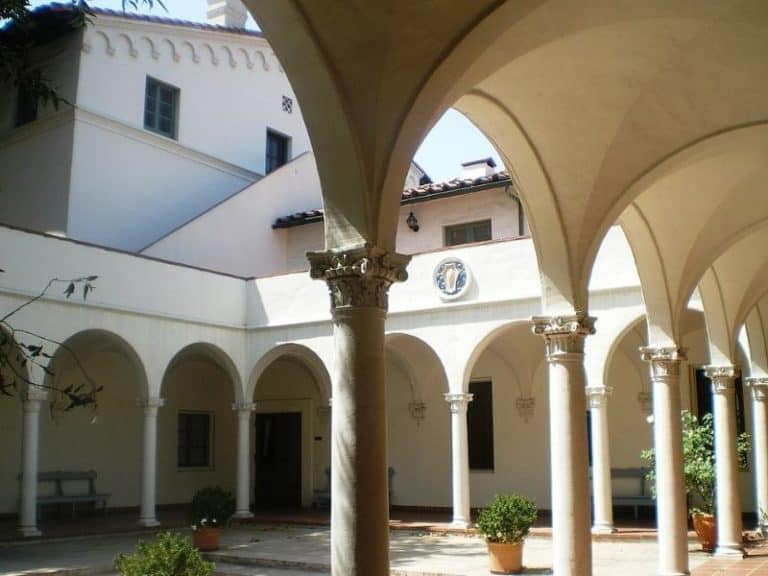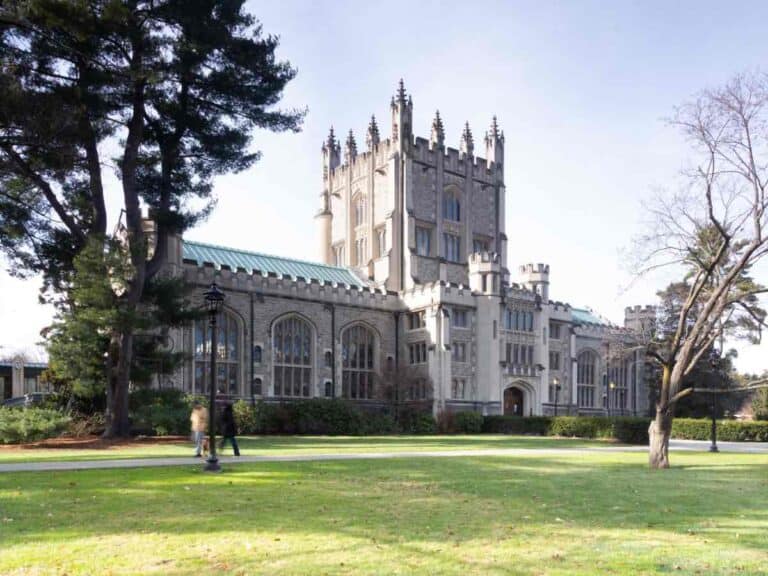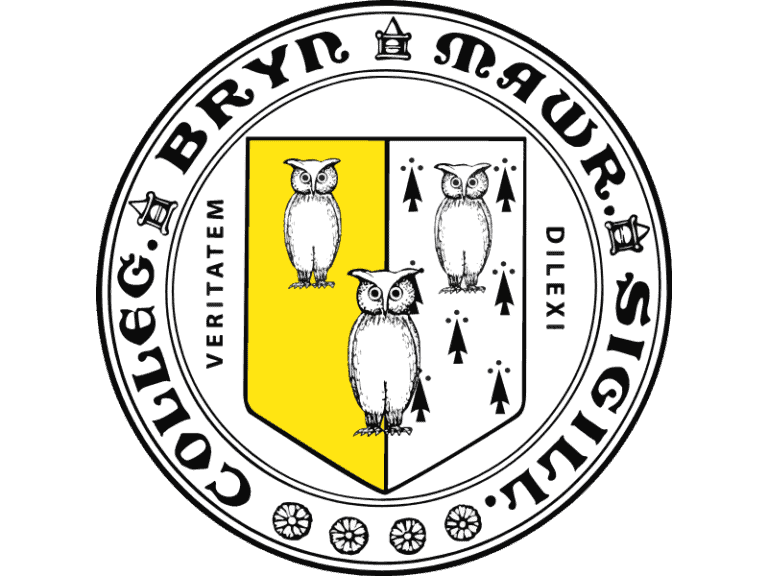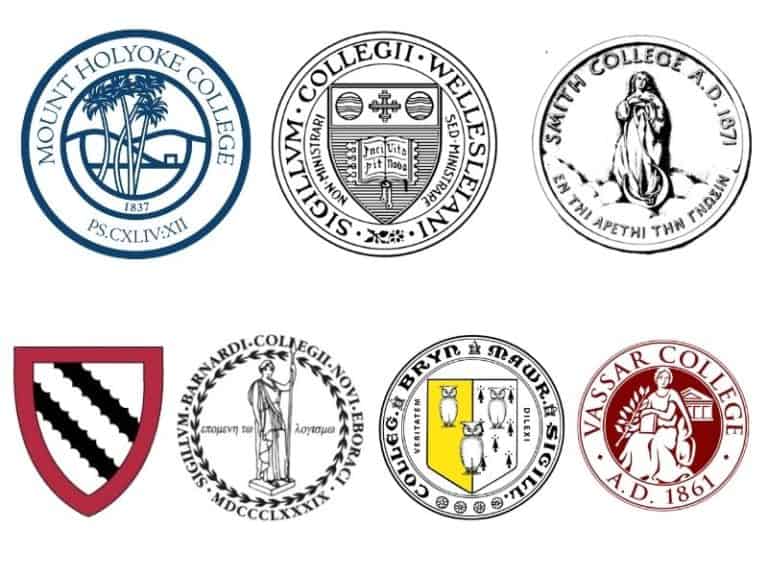What Barnard College is Known For
You probably heard from someone or read from somewhere that Barnard College is a prestigious liberal arts school for women. Especially if you want the majority of your classmates to be females (students may take classes at Columbia University), you may find it enticing to apply to Barnard.
Barnard College is known for being the most selective Seven Sisters school and affiliated with Columbia University. It’s known for majors such as Social Sciences, Biomedical Sciences, Psychology and Literature. When it was founded, it was the first school in New York City to offer degrees to women.
Elite, selective, expensive. These are some of the things that best describe Barnard College.
If you like to know more about Barnard because you are thinking about attending it, don’t stop reading now. Below, you will come across just about everything you need to know about it before sending in that application. By the time you get to the end of this article, hopefully, you will have a better idea if it’s the school to go to.
A Brief History of Barnard College
In the past, like many other elite schools in the US, Columbia University only admitted men. While the Columbia Board of Trustees agreed to allow women to earn certificates from the university, still, they were not allowed to attend regular classes — top-notch traditional education remained exclusive to men.
Women wanted more than that. They created a committee and, for two years, petitioned the Columbia Board of Trustees to come up with a college affiliated with Columbia University.
It’s because of this why, in 1889, Barnard College, an all-women’s liberal arts institution, came into being.
Barnard College was named after Columbia University’s president, Frederick A.P. Barnard, who died one year before the school opened. Barnard was the very first college in New York City to offer degrees to women, which they could earn stepping foot inside traditional classrooms.
Barnard has a beautiful campus, with grass and brick walls. It also gets to have Columbia as another campus. You get the best of both worlds. It is one of the best liberal arts schools in the country, since it is an ivy league school at Columbia.
Review – Niche.com
In 1926, Barnard College, together with Bryn Mawr College and Radcliffe College, also single-sex schools, were asked to join the Four College Conference. It consisted of four all-women’s schools: Vassar College, Mount Holyoke College, Wellesley College and Smith College. The goal was to provide women schools equivalent to the Ivy Leagues.
The following year, the alliance of seven liberal arts schools was named the Seven Sisters.
Here are some quick facts you need to know about Barnard…
- Location: New York City, New York
- Campus type: City
- Size: 4 acres
- Education system: Liberal
- School type: Private, non-profit liberal arts women’s college
- Reputation: Non-party school
- Number of majors: 45
- Best majors: Social Sciences, Biomedical Sciences, Psychology, Visual and Performing Arts, Literature
- Selectivity: Highly selective
- Average class size: 20 students
- Student-to-faculty ratio: 9:1
- Retention rate: 95%
- Graduation rate: 91%
- Color: Blue and white
- Mascot: Millie the Dancing Bear
- Number of varsity teams: 16
- Sports: Basketball, volleyball, softball, tennis, lacrosse, golf, soccer, softball, squash, fencing, archery, field hockey, rowing, diving, swimming, cross country, track and field
Acceptance Rate at Barnard College
The acceptance rate at Barnard College is 11.8% only. With an acceptance rate that low, this puts the school in the highly selective category. Among the members of the Seven Sisters, Barnard has the lowest acceptance rate, which makes it the hardest school to gain admission into in the consortium.
Many students who are not completely confident with their GPA, test scores, and overall application check out a school’s acceptance rate before putting it on their list.
As a general rule, the lower the acceptance rate, the lower the chances of getting an acceptance letter.
Because Barnard has an acceptance rate of 11.8% only, it doesn’t come as a surprise why many students steer clear of applying to it — they know that they have better chances of getting accepted elsewhere.
In fact, in the college ranking by Money Talk news entitled 35 Hardest US Colleges to Get Into in 2020, Barnard College was 34.
Earlier, it was mentioned that Barnard is the hardest school to get into among the Seven Sisters. To give you a much better idea, take a look at this table comparing the Seven Sisters schools’ acceptance rates:
| SCHOOL | ACCEPTANCE RATE |
|---|---|
| Barnard College | 11.80% |
| Wellesley College | 21.60% |
| Vassar College | 23.70% |
| Smith College | 32.50% |
| Bryn Mawr College | 33.20% |
| Mount Holyoke College | 38.00% |
If you have a solid application, most especially a high GPA, and love to go to an elite all-women’s liberal arts college, then don’t feel too terrified to apply to Barnard College.
Speaking of which, let’s give an answer to this pressing admissions-related question…
GPA You Need to Get Into Barnard College
The admissions officers of Barnard College are looking for applicants with GPAs of 4.0 at least. Because of the high minimum GPA requirement, it’s perfectly understandable why the school has a low acceptance rate. However, with a holistic admissions process, the GPA is not the only consideration.
Having a 4.0 GPA is extremely challenging if you are already in your junior or senior year of high school when you are busy reviewing for the SAT or ACT and applying to colleges and universities.
So, in other words, if you don’t have a GPA of 4.0 just before you send your application to Barnard College, consider sending it to another school whose minimum GPA requirement is lower.
The same is true if you haven’t taken challenging AP or IB classes, although that should not be an issue if your high school doesn’t offer them.
Fret not if your GPA is a tad lower than what Barnard is looking for. That’s because it’s not the only thing on your application that the school’s admissions officers will consider when deciding your fate. They will also take into account your extracurricular activities, admission essays, letters of recommendation, etc.
To know the things that you will have to submit to Barnard College together with your application, read on. In a few, we will talk about everything you will have to send to its admissions office.
Speaking of application, let’s answer this question that pops into the minds of many hopefuls…
Does Barnard College Offer Early Decision?
Barnard College offers Early Decision (ED). As a matter of fact, for the class of 2024, up to 45% of students were admitted through ED. The school offers only one round of ED. So, in other words, at Barnard, there are only two decision plans applicants may choose from: ED and Regular Decision (RD).
Among the Seven Sisters schools, Barnard College has the lowest acceptance rate.
It’s for this reason why it’s a good idea to apply to the school earlier than everybody else. According to the admissions officers themselves, the majority of applicants apply through RD. By applying ED, you may enjoy the advantage of standing out in a small pool of applicants, thus allowing you to have increased chances of getting accepted.
However, there is a catch that comes with applying ED. If you get accepted at Barnard via ED, which is binding, you have no choice but to withdraw your application from other colleges and universities and go to the all-women’s school. Unless you have a very good reason for backing out of the offer, you will be penalized.
Making sure that your application is received on or before the deadline is a must. To help keep unnecessary application-related issues at bay, check out this table comparing the two decision plans at Barnard:
| DECISION PLAN | APPLICATION DUE | NOTIFICATION DUE |
|---|---|---|
| ED | 1-Nov | Mid-December |
| RD | 1-Jan | Late March |
* Always check the college website for the latest dates
It’s not enough that you know when to submit your application. It’s also a must that you know what to submit to Barnard’s admissions office. They are:
- Common App or Coalition App
- Barnard writing supplement
- Non-refundable application fee or fee waiver request
- Official transcripts
- High school report and profile
- Mid-year report
- Letters of recommendation (one from the high school counselor and two from teachers)
There are also optional application materials. They include SAT or ACT scores, additional letters of recommendation, supplementary portfolios, and supplementary portfolios.
Since ACT or SAT scores were mentioned, let’s give an answer to this pressing question…
Does Barnard College Require SAT or ACT Scores?
As of 2021 to 2023, Barnard College has a test-optional admissions process. It means that applicants are not required to submit their SAT or ACT scores. Test scores will be considered in the decision-making process if provided. Otherwise, a decision will be made based on the rest of the application.
Barnard typically requires applicants to provide their standardized test scores. What the school doesn’t require is the Essay section of the SAT or the Writing section of the ACT. SAT Subject Tests are not required as well.
The average SAT score of students admitted into Barnard College is 1404. On the other hand, the average ACT score of students admitted into the school is 31. The need to have high SAT or ACT scores is one of the things that make the school one of the most selective liberal arts colleges in the nation.
This school is very pretentious and competitive. It is an Ivy League. People are insecure and try very hard to seem smart. It is a very isolating situation.
Freshman Review – Niche.com
Like many schools, Barnard superscores both SAT and ACT scores.
So, in other words, it takes the highest scores of each test date and adds them up to obtain an applicant’s standardized test superscore. This is why you should consider submitting all your SAT or ACT scores if you took the exam more than once.
Since Barnard College is test-optional as of late, it’s up to you if you will provide your test score or not.
If you have a high SAT or ACT score, it’s a good idea to send it together with the rest of your application. After all, more than 60% of students admitted into Barnard submitted their test scores.
After having an idea of the things to submit, it’s time to get to know this very important matter…
How Much Does It Cost to Go to Barnard College?
Based on the academic year 2020 to 2021, the overall cost of attending Barnard College amounts to $76,279. Needless to say, going to school doesn’t come cheap. The good news is that Barnard has strong financial aid programs for very bright students and those from very low-income brackets.
Other than being highly selective, Barnard can be expensive, too. The average cost of going to a college or university in the US for one academic year amounts to $35,720 only.
That’s more than 50% less than the cost of attending Barnard College for one academic year!
Luckily, unlike some Seven Sisters schools and other all-women liberal arts colleges in the country, students at Barnard are not required to live on-campus. This means that they can deduct $15,691 (the cost of room and board) from the sticker price if they wish to live elsewhere, bringing the total cost from $76,279 down to $60,588.
Let’s quickly check out the breakdown of the cost of going to Barnard College for a year:
| BARNARD FEES | COST |
|---|---|
| Tuition and fees | $58,068 |
| Room and board | $15,691 |
| Miscellaneous | $1,370 |
| Books/supplies | $1,150 |
| TOTAL | $76,279 |
By the way, since Barnard College is a private school, the tuition and fees remain the same for in-state students and out-of-state students, making the COA steep for all students, unless awarded with scholarships and grants.
After knowing how much you will have to pay as a Barnard student, let’s get to know some of its alumni…
Famous That People Went to Barnard College
Many people whose names ring a bell went to Barnard College at one point in their lives. Some of them are political figures, scientists, authors and journalists, while others are entrepreneurs. As an all-women’s college, Barnard has a strong-knit network of alumni its graduates could benefit from.
To get to know Barnard more, it’s a good idea to get acquainted with some of its graduates, in particular those that have helped shape the course of human history.
Are you wondering where attending Barnard College could take you? Then consider checking out the names of some well-known people who attended or graduated from it. You may not end up as popular and successful as them after getting your degree from the all-women’s school. But with hard work and passion, you could also make a name for yourself.
Without further ado, let’s take a look at some of the most notable alumni of Barnard:
- Sheila Abdus-Salaam. In 2013, Sheila Abdus-Salaam became a judge of New York’s highest court, the New York Court of Appeals. She was also the first African-American woman to serve on the state’s high court. She completed her bachelor’s degree in Economics from Barnard College in 1974.
- Elsie Clews Parsons. A feminist and sociologist, Elsie Clews Parsons is one of the founding mothers of American anthropology. She was also the first female president of the American Anthropological Association (AAA). In 1896, she earned her bachelor’s degree at Barnard, where she taught sociology from 1899 to 1905.
- Linda Laubenstein. In the early 1980s, paraplegic Linda Laubenstein was among the first US doctors to recognize the AIDS epidemic. She also co-wrote the very first article connecting AIDS to Kaposi’s sarcoma. She graduated from Barnard College in 1969. She went there because of wheelchair accessibility.
- Jeane Kirkpatrick. A major role player in the foreign policy of the Reagan administration, Jeane Kirkpatrick was the first woman US Ambassador to the United Nations. After earning her associate degree from Stephens College, she attended Barnard and earned her bachelor’s degree there in 1948.
- Natalie Angier. Besides being a nonfiction writer, Natalie Angier was also a science journalist for the New York Times. She was a Pulitzer Prize for Beat Reporting winner in 1991. In 1978, she graduated magna cum laude from Barnard College, where she studied astronomy, physics and English.
- Atoosa Rubenstein. Born in Iran and moved to New York when she was three years old, Atoosa Rubenstein was the editor-in-chief of Seventeen magazine. She was also the founding editor of another magazine, Cosmo Girl. She graduated from Barnard in 1993 with an undergraduate degree.
- Margaret Mead. An anthropologist, Margaret Mead was best known for her studies of the indigenous people of Oceania. She also dabbled in women’s rights, environmental pollution and many other issues. She attended DePauw University and transferred to Barnard College after a year, where she graduated in 1923.
- Eileen Ford. One of the earliest international modelling agencies on the planet is Ford Models, and it was founded by Eileen Ford together with her husband, Jerry Ford. She graduated from Barnard in 1943 and was doing fashion modelling while being a student at the liberal arts college for women.
- Martha Stewart. Considered as the most trusted lifestyle expert and teacher, Martha Stewart is an entrepreneur, author and Emmy Award-winning TV host. She founded Martha Stewart Living Omnimedia (MMLO). In 1963, she graduated from Barnard with a double major in History and Architectural History.
- Cynthia Nixon. For portraying Miranda Hobbes in Sex and the City, Cynthia Nixon became a household name. She won the Primetime Emmy Award for Outstanding Supporting Actress in a Comedy Series in 2004. She earned her bachelor’s degree in English Literature at Barnard College in 1988.
After checking out Barnard’s most notable alumni, let’s check out how it fares against other institutions…
How Does Barnard College Compare With Other Schools?
Among the Seven Sisters schools, Barnard College is the most selective. This means that its students are some of the best in the nation. However, there are certain factors that make other institutions, especially all-women’s ones, better than Barnard, such as cost, campus size and graduation rate.
Compared with many US colleges and universities, there is no denying that Barnard is more prestigious. This is most true since it has a partnership with Columbia University, one of the Ivy League schools.
It’s because of this partnership with the elite co-ed school why you might share the classroom with a few male and female students from Columbia University. Similarly, you could end up taking classes at it. Needless to say, even though Barnard College is an all-women’s school, it can still make you experience attending a co-ed school.
Let’s quickly compare Barnard with the rest of the Seven Sisters schools using certain criteria…
- Is Barnard Better Than Smith College? Going to Barnard is cheaper because it has a slightly lower COA than Smith. However, applicants have higher chances of gaining admission into Smith due to its much higher acceptance rate. Barnard is a very selective all-women’s school, as evidenced by its 11.8% acceptance rate.
- Is Barnard Better Than Mount Holyoke College? Mount Holyoke has a campus size that’s several times bigger than that of Barnard — 800 acres vs. four acres. Despite this, Mount Holyoke has a lower population than Barnard. However, Barnard has a higher graduation rate, and its graduates tend to earn more annually after 10 years — $66,900 vs. $50,000.
- Is Barnard Better Than Vassar College? Getting into Vassar is so much easier than Barnard because it has a significantly higher acceptance rate — 23.7 vs. 11.8%. Population-wise, both colleges have pretty much the same number of students, although Vassar accepts both male and female applicants, unlike the rest of the Seven Sisters. Vassar has been a co-ed school since 1969.
- Is Barnard Better Than Bryn Mawr College? Barnard has higher tuition than Bryn Mawr. However, the COA at Bryn Mawr can easily soar as students are required to live on-campus — room and board at Bryn Mawr cost $17,100. Barnard students can live off-campus, although first-year students are encouraged to live on-campus.
- Is Barnard Better Than Wellesley College? Barnard and Wellesley have the same graduation rates and pretty much the same number of students. While both schools are highly selective, it’s easier to gain admission into Wellesley because of its higher acceptance rate — 21.6% vs. 11.8%. More students are getting financial aid at Wellesley, despite it having slightly lower tuition than Barnard.
Just Before You Apply to Barnard College
If you want to attend a prestigious all-women’s school that also offers a co-ed experience, consider applying to Barnard College. However, see to it that you are at the top of your high school class and have a very strong application. Above, we made it clear that Barnard is a highly selective school.
With an admission rate of 11.8% only, you will have to be what the school is looking for exactly.
This article is a part of series about Seven Sisters colleges.
Previous Article: What Vassar College is Known For
Next Article: What Smith College is Known For
Disclaimer: The views and opinions expressed in this article are those of the authors and do not necessarily represent those of the College Reality Check.





